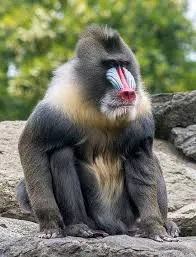The Guinea Baboon
This baboon is also called the "Red Baboon" due to the red colour pattern of its fur.
The gestation period for the female is 183 days.
These baboons can live 35-45 years and can run up to 45 km/H. It is 508-1,143mm in length and weighs 13-25kg.
They are terrestrial animals, although they are accomplished climbers. They sleep in large trees and at night, looking for food during the daytime hours. They communicate through specific calls.
This baboon will eat both plant and animal, such as roots, fruits, seed, tubers, bulbs, corns of grasses and occasionally meat.
The female gives birth to one baby which is nursed until about 6-8 months old. The female becomes 'reproductively' mature at 4.3 years of age.
LIVE AND LOVE LIFE!





















